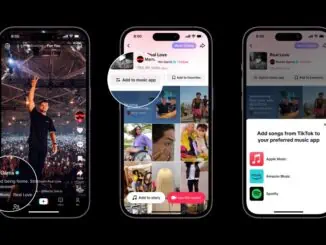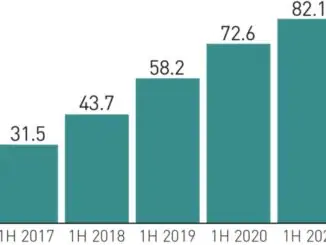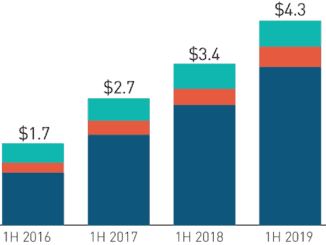
Listening on mobile devices set to surpass traditional radio in US according to recent research from Edison Research. The findings are from their Share of Ear reports based on a nationally representative study of Americans aged 13 and older and their listening habits over a 24 hour period. Listening on a mobile device now accounts for 30% of all time spent listening to audio – an increase of 67% since 2014.Listening on a mobile device has been growing steadily since Edison Research’s Share of Ear study began tracking audio consumption among Americans in 2014.
The gap between listening on a traditional radio receiver and a mobile device has narrowed remarkably quickly since 2014. 31 percentage points separated the two in 2014 and only five percentage points separate the two today. The traditional AM/FM radio receiver does account for the largest share of audio consumed but has decreased the most since the survey began, now accounting for 35% of all audio consumption compared to 49% in 2014.
Mobile devices have already surpassed traditional radio receivers in the younger age groups. Among those age 13-34, 46% of total daily audio consumption is done on a mobile device and 20% is done on a traditional AM/FM radio receiver.
It is important to note that these statistics speak to device only, not the audio product that is delivered by the device. Mobile devices can deliver a wide range of audio products, including radio station programming.
Larry Rosin, Edison Research President said “Mobile devices, particularly of course the phone, have been gaining on the traditional radio receiver as the primary listening device for as long as we have been measuring Share of Ear, but with the disruptions of the last year the gap has narrowed dramatically. As fewer people have a standard radio receiver in their homes these days, naturally more listening comes through digital devices.”
COVID-19 disruptions meant Americans spent more time consuming audio at home in 2020 and less time consuming audio in-car, the prime location for listening to a traditional AM/FM receiver, which could explain some of the change in the past year. Edison Research stated that further data analysis in the coming year will be needed to see if these audio habits remain post-quarantine.




